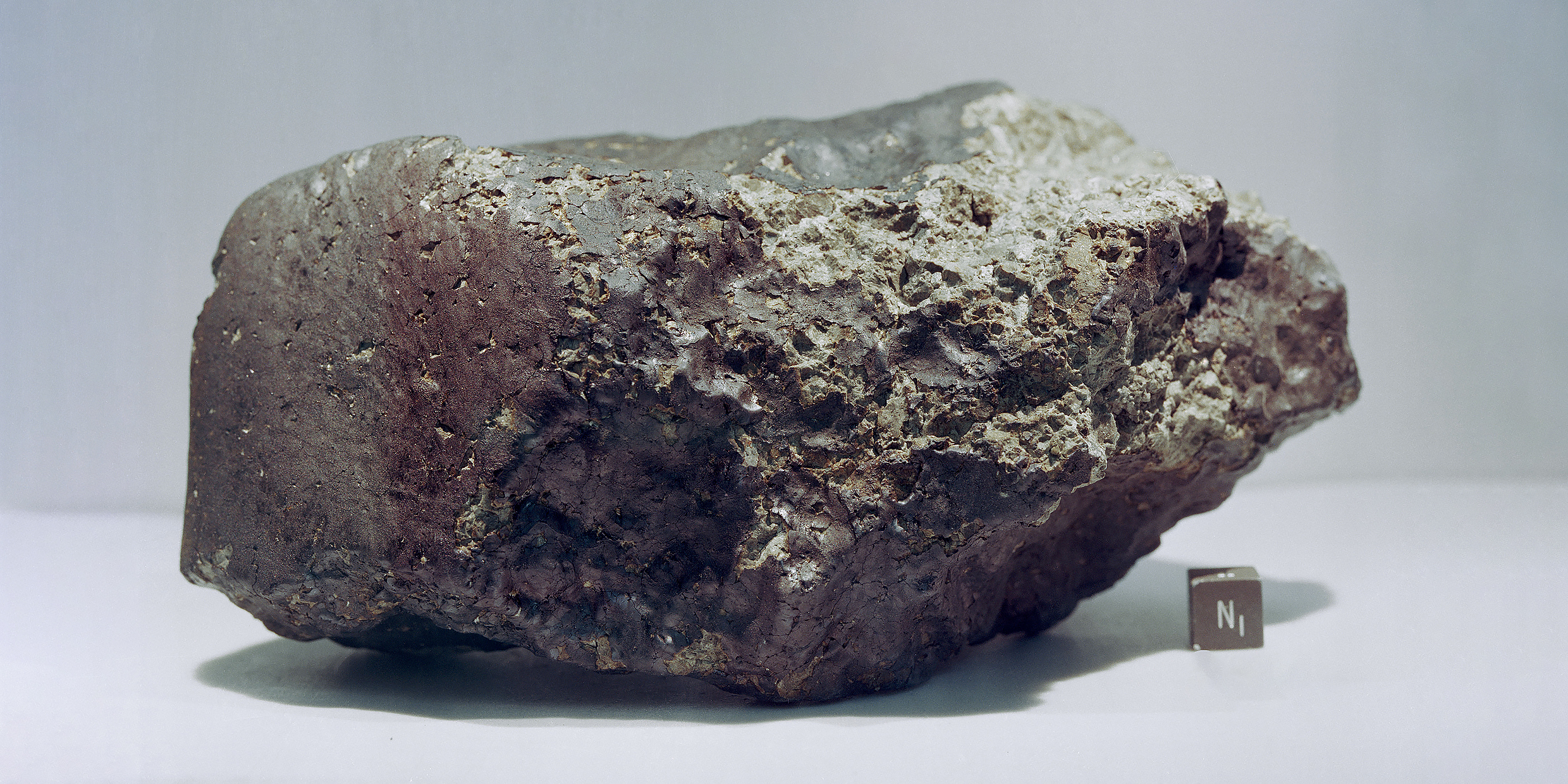Originally published 10 June 1996
How do we gather the stuff of the universe for study here on Earth?
The Star Trek method: Go where no one has gone before. Apollo astronauts brought back buckets of rocks from the moon. Three Soviet unmanned Luna missions also returned lunar rocks to Earth. The method is expensive, which explains why no round-trip missions to the moon or planets have been launched in the past 20 years.
The cheaper method: Let the universe come to us.
Each year, tens of thousands of tons of meteoric material fall upon the Earth from space. Most of this material is in the form of small particles that burn up in the upper atmosphere. Occasionally a meteorite arrives that is big enough to blast a huge crater and cause mass extinctions.
Most interesting from the scientific point of view are those meteorites that are large enough to survive the plunge through the atmosphere, but not large enough to be devastating. These collectibles from the sky are messengers from the world beyond.
Not so long ago, it was thought that all meteorites had their origin in the asteroid belt, the band of small bodies that orbit the sun between Mars and Jupiter. It was imagined that collisions between asteroids scatter fragments into trajectories that eventually bring them to Earth.
In recent years, however, it has become clear that our planet is also bombarded by pieces of the moon and Mars, blasted from the surfaces of those bodies by the impacts of asteroids.
The best place to collect these purported chunks of other worlds is on the Antarctic ice cap. Objects that fall onto the accumulating glacier are carried with the moving ice to places where fierce winds blow away the ice, gathering a million year’s worth of meteorites for easy picking. Among the thousands of meteorites that have been collected in Antarctica, a few dozen have been identified as coming from the moon or Mars.
The moon rocks are easy to identify by comparing them with Apollo and Luna samples. The Martian meteorites are more problematic, but gases trapped within one of these objects almost perfectly matches the composition of the Martian atmosphere, as determined by the Viking Lander missions to Mars.
Like Apollo and Luna moon rocks, Martian meteorites reveal the history of their parent planet. For example, water contained in Martian meteorites suggests that Mars may once have had an ocean or a water-rich atmosphere. Carbonates and organic molecules found in a 4‑billion-year-old Martian meteorite known as ALH84001 hint at the kind of conditions on Mars that gave rise to life on the early Earth.
How do rocks ejected from the moon or Mars and make their way to Earth? In a recent issue of the journal Nature, a group of scientists from Cornell University, Queen’s University in Ontario and the Southwest Research Institute in Colorado describe computer simulations that trace the flight of impact ejecta over millions of years, from their place of origin, to their final collision with our planet.
It appears that material from the moon and Mars can easily make their way to Earth. A small number of meteorites from Mercury would also appear to be expected, although none has been identified. The greater gravity of Venus makes that planet a less likely source of escaped material.
Interestingly, the flight time of meteorites between ejection from their source body and arrival on Earth can be estimated by measuring their exposure to high-energy cosmic rays in space, which causes radioactive isotopes to accumulate in the meteorite. The measured flight times of actual meteorites is consistent with the computer simulations.
Another recent article in Nature by Australian and New Zealand astronomers describes celestial visitors of an even more exotic origin.
These astronomers used a sensitive radar to track the faint meteors (“shooting stars”) produced by dust grains hitting the Earth’s atmosphere. A small fraction of these meteors have velocities too great to have originated anywhere within the Solar System. They must therefore come from interstellar space.
The incoming trajectories of these meteors suggest that many of them come from two nearby groups of hot stars. How these stars spew dust into space is not yet known.
The study of meteors and meteorites is a classic example of the power of the scientific way of knowing, involving the collaboration of astronomers, chemists, physicists, geologists, and computer scientists. What is important is that these diverse lines of investigation are consistent and mutually reinforcing. In this way, the human mind reliably extends itself into the realm of the stars without ever leaving the Earth.
The turn-of-the-century naturalist John Burroughs felt no need to travel; sooner or later, he said, the turning Earth brought everything by his door. The same apparently applies to those scientists who study the stuff of the cosmos.



